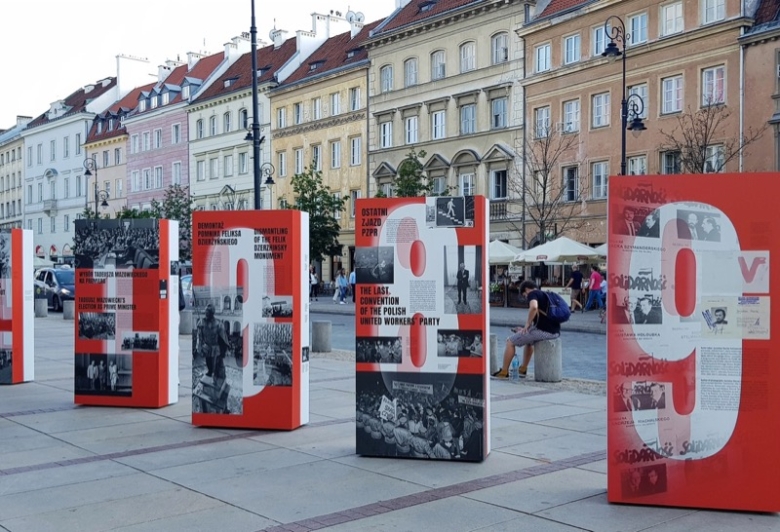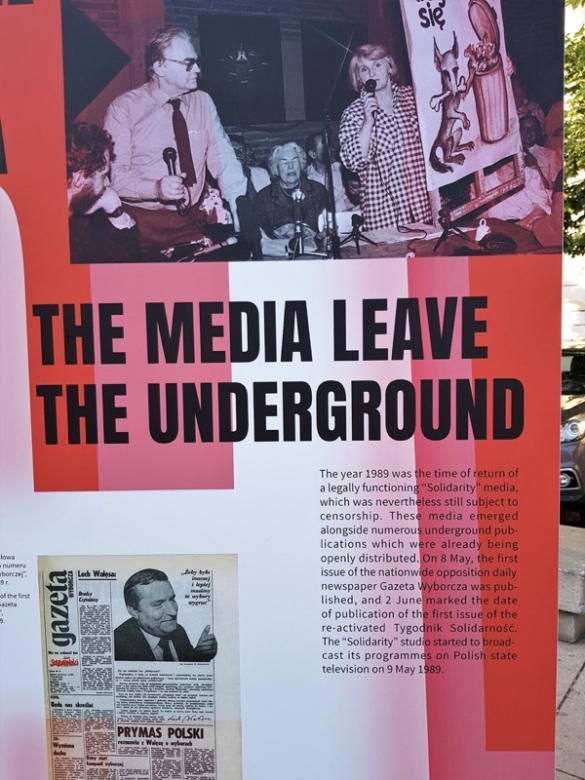Des journalistes d'Europe centrale et orientale discutent des questions critiques de la religion dans les actualités
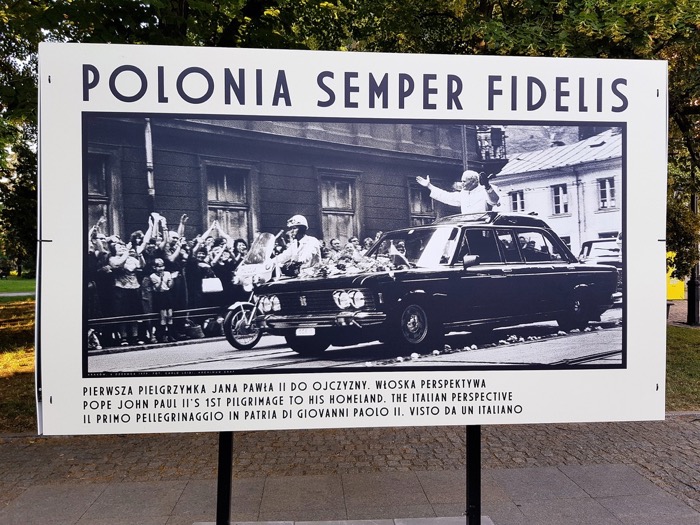
VARSOVIE, Pologne, 13-14 juin 2019-Des journalistes d'Europe centrale et orientale se sont réunis à Varsovie à l'occasion d'une conférence sur la couverture des questions de foi dans la vie publique, la politique et l'histoire dans la région. l'Association internationale des journalistes religieux (IARJ).
La conférence, appelée Journalisme et religion en Europe centrale et orientale30 participants ont assisté à la conférence. Les questions d'actualité qui ont été abordées sont les suivantes
- Traitement journalistique des minorités religieuses et culturelles ;
- Couverture des migrations, de la religion et de la politique ;
- Reportage sur le Vatican et l'Église catholique romaine, ainsi que sur les Églises orthodoxes ;
- Lutter contre les discours haineux et les fausses nouvelles.
La conférence a réuni des représentants de l'IARJ d'Europe occidentale, d'Amérique du Nord et du Maghreb, ainsi qu'un universitaire de la région. Elle a été accueillie par la Faculté de journalisme, d'information et d'études du livre de l'Université de Varsovie (UW). https://www.wdib.uw.edu.pl/en/home.
Ce qui suit est un échantillon d'images et de commentaires issus des principales sessions de la conférence.

Diversité religieuse et culturelle :
Couvrir les minorités tout en rendant compte des majorités
Parmi les commentaires formulés lors de cette session :
Philosophe Stanislaw Krajewski, co-président du Conseil polonais des chrétiens et des juifs, a fait valoir que il existe de nombreux types de minorités ; chacun d'entre nous appartient probablement à l'une d'entre elles. Il est impossible de les prendre toutes en compte.
Selon lui, même si nous identifions des minorités à prendre en compte, il est naturel d'avoir la majorité à l'esprit et d'accepter les normes dominantes, généralement au service de la majorité.
Krajewski, qui est co-auteur de la section sur l'après-guerre de l'exposition principale du musée de l'histoire des Juifs polonais POLIN https://www.polin.pl/enIl a également réfléchi à la l'impact politique de la couverture des minorités et les tabous éventuellement levés.
Zuzana Kepplová de la Slovaquie, journaliste à la presse écrite PME https://www.sme.sk/a expliqué que dans son pays la religion est souvent considérée comme liée à l'ethnicité, à l'héritage national qui ne doit pas être partagé avec les Roms.
Mme Kepplová a illustré son propos par un article publié par le journal sur les églises vides de Gemer, une région où les infrastructures sont insuffisantes et les services inexistants. Nous avons décidé de raconter l'histoire de prêtres qui deviennent mélancoliques lorsque les églises sont rénovées et transformées en sites touristiques potentiels alors qu'ils perdent des fidèles. Ils ne rencontrent que des Roms
a-t-elle déclaré.pour le baptême et les funérailles
,
Reportage sur les réfugiés, l'islam et la politique européenne et nationale
Parmi les commentaires formulés lors de cette session :
Karol Wilczyński de Polognejournaliste du site catholique DEON https://www.deon.pl/ et co-créateur avec sa femme Anna de https://islamistablog.pl/Dans le cadre de la "crise migratoire" qui a débuté en Europe en 2015, il a posé la question de savoir s'il suffisait d'être la voix de ceux qui n'ont pas de voix. Il a noté que Depuis 2015, les sentiments anti-islamiques et anti-réfugiés sont en hausse en Pologne,
alors que les musulmans et les réfugiés eux-mêmes sont à peine présents dans la société polonaise. Wilczyński a fait valoir que être
.la voix des sans-voix
c'est-à-dire les musulmans et les réfugiés : Les musulmans et les réfugiés ne suffisent peut-être pas encore à rendre compte de la situation de manière impartiale et à briser la dichotomie polarisante entre l'islam et l'islam. pour
et contre
Viktória Serdült de la Hongrie, journaliste à l'Institut d'études de marché de l'Union européenne (UEMOA) HVG https://hvg.hu/, summarized the situation in her country this way: Reporting on refugees and Islam in Hungary is reporting against the currents. Such currents can be two-fold: first, it’s the lack of resources; secondly it’s Government control of the media. And as in most cases, the two are interconnected.
According to Serdült, because of the lack of funding, the number of first-hand accounts of refugee issues, Islam and international politics, have decreased,
and news coming from Government-controlled media outlets offer news reports influenced by anti-migration, anti-Islam and anti-European Union rhetoric of the governing party.
Joanna Szylko-Kwas, a scholar in the Faculty of Journalism at the University of Warsaw, presented her analysis of coverage of refugees by Polish daily press, with special attention to the function of photography. She recalled how in Poland this issue is all the more common since it constitutes an element of the ongoing dispute between the governing party and the opposition, and more importantly, between the Polish government and the European Union.
Szylko-Kwas concluded that the level of emotions related to the presented topic periodically increases, especially when there are some new related occurrences, only to drop later, yet it never dies out completely.
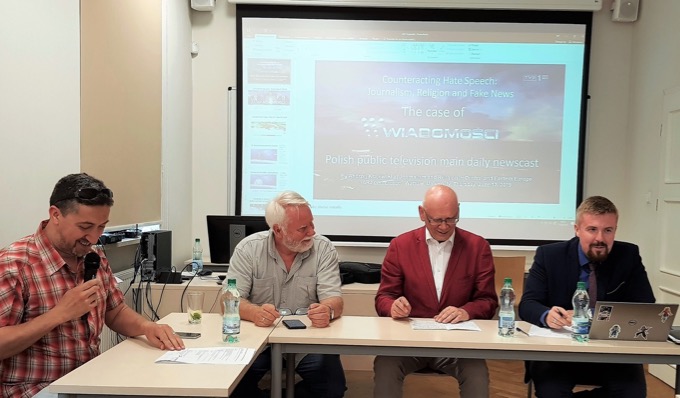
Counteracting Hate Speech:
Journalism, Religion and Fake News
Parmi les commentaires formulés lors de cette session :
Adam Szostkiewicz, a journalist with Polish newspaper Polityka https://www.polityka.pl/TygodnikPolityka, raised the issue of hate speech in the field of religion by discussing a number of examples dealing with Jews, Islam and the Roman Catholic Church in Poland. He argued that there is no quick solution because these are very emotional and divisive issues in public perception.
Szostkiewicz also noted that a concerted effort by all sorts of institutions which are supposed to deal with these issues, including public and church authorities, as well as public media, may be desperately needed to tackle the problem
.
Andrzej Krajewski of Poland, a TV journalist who focuses on free speech, presented an analysis on Wiadomości, a daily newscast in Polish television that airs during prime time at 7:30 pm. He stated that 75% of Wiadomości titles were of evaluation character instead of informative one.
Krajewski explained that the activities of the authorities were described with words such as: reform, strong, hero, help, sovereign,
whereas the activities of the opposition were described by words such as: scandalous, shocking, provocative, arrogance, coup d’état, embarrassing, escalation, savagery
.
Tomasz Gackowski, a scholar in the Laboratory of Media Studies https://www.lbm.uw.edu.pl/en/ at the University of Warsaw, stated that hate speech as a fatal phenomenon of present days seems to affect almost everybody.
He noted that the web seems to be not only a space of freedom and interaction, but also a great environment for hate speech,
and he elaborated on the dangers posed in the internet by fake news and deep fakes. Gackowski argued that in the present times of post-truth and post-politics defined by Baumann, for many people the truth isn’t a value which we should take care of, but the thing to challenge or even to mislead.
Reporting on the Vatican and the Roman Catholic Church
Parmi les commentaires formulés lors de cette session :
Paweł Bravo of Poland, a journalist with Catholic weekly Tygodnik Powszechny https://www.tygodnikpowszechny.pl/, said that many things have changed in Poland over the last 30 years, but not the attitude of the Catholic Church towards journalists.
According to Bravo, the behaviour of Polish bishops towards journalists is frozen in the 1980s, they don’t even organize real press conferences, and they treat us as enemies.
He claimed that he and his colleagues have to rely heavily on personal contacts for interesting stories, and to call sources in the Vatican who were active there during the pontificate of Polish Pope John Paul II.
Saulena Žiugždaitė of Lithuania, a journalist who contributes to Catholic online daily Bernardinai http://www.bernardinai.lt/, argued that the era of Pope Francis opened a golden age for the Catholic media, encouraging journalists to do their job well and expressing a strong stand for transparency in the Church, particularly on issues of sexual abuse, abuse of power and financial transactions.
She explained how Bernardinai, which was founded by the Franciscans in 2004, periodically struggles for financing. The local Catholic Church expects us to be a part of its PR apparatus in the ideological war; it took time for both the hierarchy and lay readers to understand the nature of journalism,
she concluded.
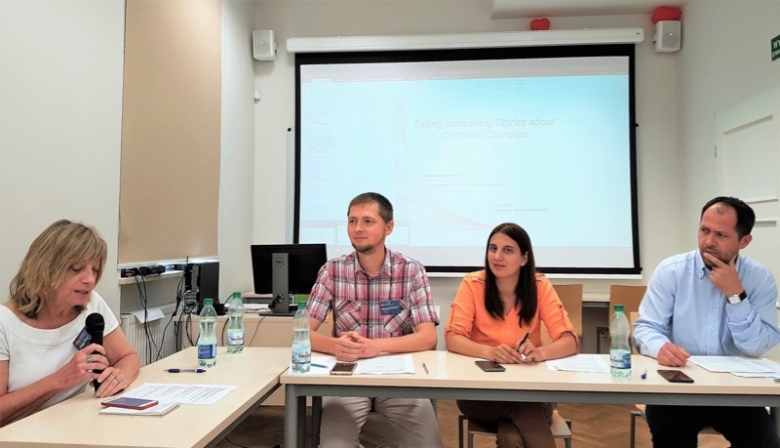
Telling Compelling Stories about Orthodox Churches
Parmi les commentaires formulés lors de cette session :
Jelena Jorgačević Kisić of Serbia, journaliste à l'Institut d'études de marché de l'Union européenne (UEMOA) Vreme https://www.vreme.com/, discussed obstacles and challenges while writing about the Orthodox Church. She noted that reporting on Orthodoxy often emphasizes its mystical, exotic aspects and replicates stereotypes. She argued that while this mystical image can be attractive for audience and thus for journalist to
Jorgačević Kisić also addressed the stance of the Serbian Orthodox Church towards media, and elaborated on use
it, it fails to provide the accountable information, to deepen the understanding and to provide reliable context.its closeness, due not just to
regular
tension between media and churches but also to historical background.
Ciprian Dumea of Romania, a journalist with public broadcaster TVR http://www.tvr.ro/, talked about the recent trip of Pope Francis to his home country, which he covered following him closely during three days, meeting the main three denominations: Orthodox, Roman Catholic and Greek Catholic. Before that, I was determined to lay out stories in which I felt discriminated confessional, both in society and especially at the workplace, where I am the only Catholic in a religious program editorial with ten people,
he said. According to Dumea, the days spent by Pope Francis in Romania were for our entire society a sort of cohabitation lesson.
Maksym Balaklytskyi of Ukraine, a journalist with Nadiia TV, explained that the Orthodox Church in Ukraine used to be perceived as a substitute of missing statehood, a symbol of
He said that, as of a study in 2018, 71.7% Ukrainians declared themselves believers, and 67.3% identified as Orthodox. Ukrainness
.In 2018, Tomos, the document by Constantinople Patriarch Bartholomew endorsing self-governance for Ukrainian Orthodox Church, was named as the main neologism of the year in the Ukrainian media,
said Balaklytskyi. He also elaborated on how Tomos became an issue for politicians as part of the ongoing conflict with Russia.
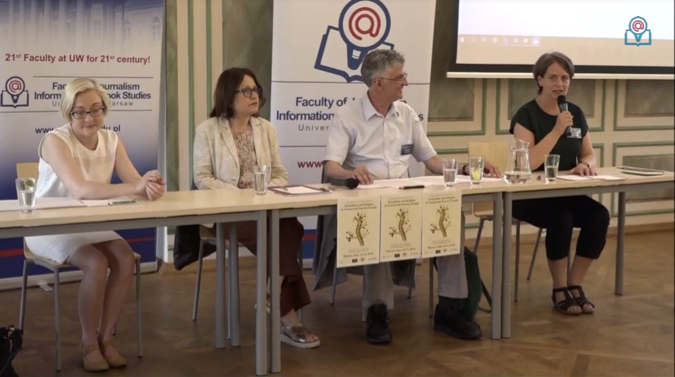
Public Session:
From Solidarity Forward
Within the IARJ conference, there was also a session open to the public, sponsored by the Association of Religion Data Archives (ARDA), http://www.thearda.com/, under the title De la solidarité à l'avenir : L'enchevêtrement de la religion, de l'histoire et de la politique en Europe de l'Est. This session was streamed online and can be watched here: https://theiarj.org/blog/2019/06/13/view-arda-and-iarj-public-forum-in-warsaw-on-religion-in-eastern-europe/
Parmi les commentaires formulés lors de cette session :
Polish scholar Christopher Garbowski, of Maria Curie-Skłodowska University https://www.umcs.pl/en/, focused on some social currents affecting religion in Poland. Religion was an essential force in augmenting the spirit of resistance to the totalitarian communist regime for Poles—not the least in the Solidarity movement of the 1980s,
he said. Garbowski added that it is less known that the communists were against the family almost to the same degree that they opposed religion,
while the Catholic Church supported it. Among other issues about present Poland, Garbowski noted how a predominantly Catholic society has such a low birth rate.
He also argued that, if religious practice has decreased among younger Poles, under the new circumstances religion has to a larger extent become a matter of personal choice rather than received tradition, and a deeper religiosity of a significant percentage of these Poles is also evident.
Bulgarian scholar Ina Merdjanova, senior researcher and adjunct assistant professor in religious studies at the Irish School of Ecumenics, Trinity College Dublin https://www.tcd.ie/ise/, explored religion, conflict and peacebuilding in the Balkans. She framed the region as a place where four major religious traditions—Orthodox Christianity, Roman Catholicism, Judaism and Islam—have coexisted and interacted for centuries.
Merdjanova recalled oppression of religions under communist secularist regimes, and how afterwards there was a return
of religion in the public sphere. While the wars in ex-Yugoslavia were by no means religious wars, religion was implicitly involved in deepening social divisions and exacerbating tensions,
she argued. Merdjanova noted that since then, interreligious dialogue has become a central tool in the continuous international efforts to promote peaceful coexistence.
Malgorzata Glowacka-Grajper, a sociologist and social anthropologist, assistant professor at the Institute of Sociology, University of Warsaw http://www.is.uw.edu.pl/pl/english/, presented the memory landscape and memory activism of local communities where state institutions have created national memorials concerning Polish history of the 20th century. The analysis of field research found that local, traditional ways of commemoration embedded in the religious language and symbols are often not recognized as important by people outside of these communities and even ignored by them.
Glowacka-Grajper argued that, depending on the situation, local memory activism based on the religious way of thinking about victimhood collide or connects with the historical politics of the Polish state based on the changing images of the national martyrs and heroes.
IARJ Representatives
The IARJ representatives in this meeting, who acted as moderators of the various panels and as facilitators of the final workshop, were:
- IARJ international chair Douglas Todd of Canada, religion writer with the Vancouver Sun https://vancouversun.com/;
- Peggy Fletcher Stack of the United States, religion writer for the Salt Lake Tribune https://www.sltrib.com/;
- Astrid Dalehaug Norheim of Norway, editor at Dagen https://www.dagen.no/;
- Elisa Di Benedetto of Italy, freelance journalist;
- Larbi Megari of Algeria, TV journalist;
- and the author of this article, María-Paz López of Spain, foreign correspondent and religion columnist with La Vanguardia https://www.lavanguardia.com/, who served as chairwoman of the conference.
Janusz Adamowski, dean of the Faculty of Journalism, opened the works on the first day.
Remembering Sasa Milosevic
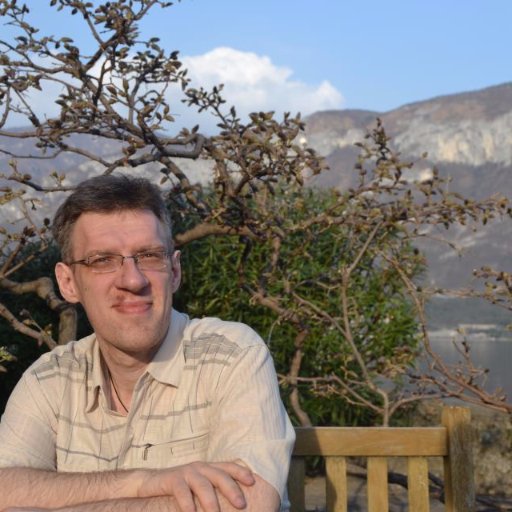
Within the conference, there was a touching moment of remembrance for Sasa Milosevic, a Serbian journalist and devoted founding member of the IARJ who died in December 2018.
Peggy Fletcher Stack, who worked with Sasa in a crossborder story years ago, evoked his memory.
She also shared some moving words sent American journalist David Briggs, who knew Sasa well and had extensive conversations with him.
Conference Sponsors
The conference Journalisme et religion en Europe centrale et orientale was financially possible thanks to the generous support of three American donors: the Kem C. Gardner Policy Institute https://gardner.utah.edu/, the Sam & Diane Stewart Family Foundation http://www.stewartfamilyfoundation.org/#the-stewart-family-foundation , and the Clark and Christine Ivory Family Foundation.
The objectives of this Warsaw meeting related to the general goals of the European Academy of Religion (EuARe) https://www.europeanacademyofreligion.org/, an European platform for research, communication and exchange on religious topics in universities and society, of which the IARJ is an active member.
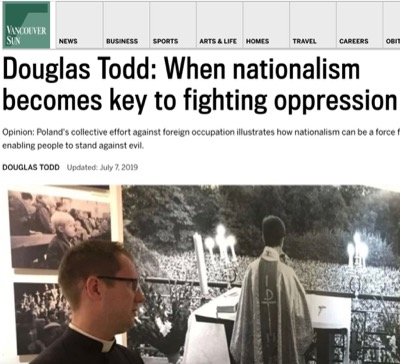
Care for More?
CHECK OUT THE CONFERENCE ON TWITTER—More info about the conference can be traced in Twitter using the hashtag #IARJWarsaw
DOUGLAS TODD published a column in the Vancouver Post about Poland’s legacy of the Solidarity movement.
And More from the Streets of Warsaw…
This year, 2019, is also the 30th anniversary of the collapse of Communism across much of Eastern Europe. While our participants were in Warsaw, historic details of that era were on display in central Stare Miasto-Old Town along central Krakowskie Przedmieście.
